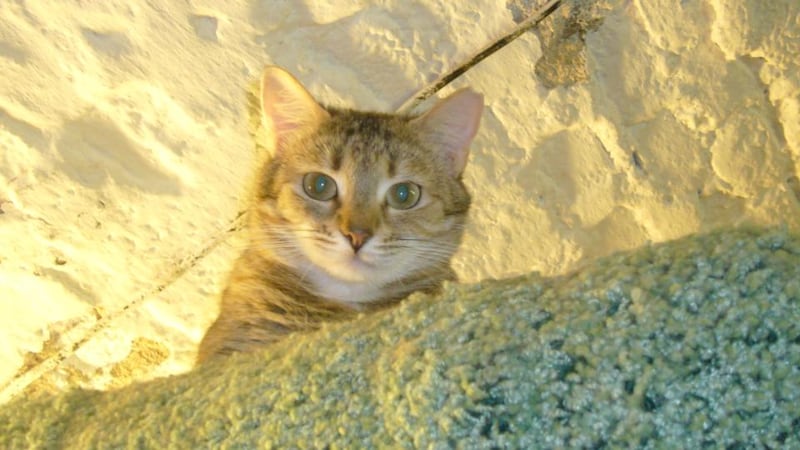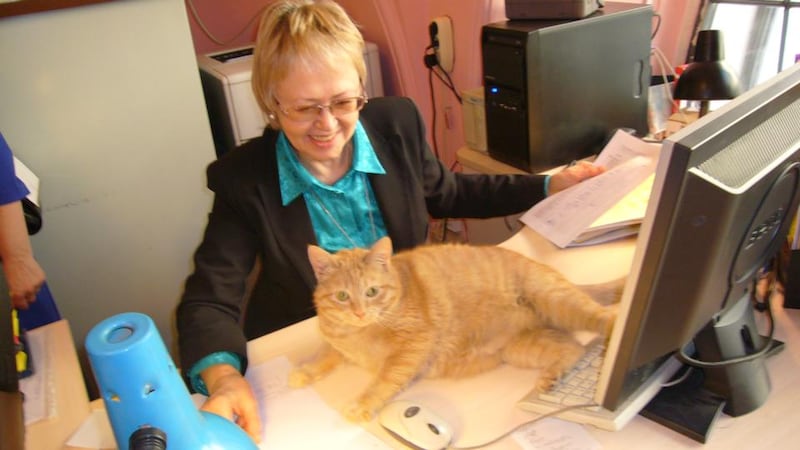They’ve been a constant presence for 250 years, since the Winter Palace was built for Empress Elizabeth. Recruited as mouse-killers, some became pets.
Catherine the Great banished her American cat, a gift from her lover Potemkin, when it scratched the face of a lady in waiting.
Cats belonging to the children of Nicholas II and Alexandra were photographed sharpening their claws on imperial tapestries. The Romanovs perished in the 1917 revolution. The cats survived.


They went feral between the wars, only to be eaten during the 1941-1944 siege of Leningrad.
Today, like stowaways in the great ship of Russian history, some 70 Hermitage cats inhabit the basement and courtyards of the 22-acre museum, ranked among the world’s four greats, with the British Museum, Louvre and Metropolitan.
In early March, the ice begins to thaw on the Neva. A few felines venture into the sunlight. More remain curled in their baskets, pampered by Tatiana Danilova, the museum's deputy head of security, known as "cats' mother", and volunteers including Irina Popovits, a former ballet dancer with veterinary training.
Heating pipes run overhead, beneath fluorescent strip lighting in the low-ceilinged passages. The pipes are clad with military camouflage, so the cats won’t burn their paws. Fifty-kilo sacks of kitty litter are stacked against the walls. The scent of cat urine wafts through the tunnels.
As anyone who has kept a cat knows, felines become the de facto owners of whatever place they inhabit. Minders are subjugated. The border between species is blurred, as when the Hermitage commissioned portraits of its cats dressed in 19th-century imperial uniforms.
Toy mice
Danilova and Popovits coo as they caress their charges and dangle toy mice for them to play with. The cats carry human names: Emma, Ginger, Juja, Kisha, Liza Minnelli, Mirabella, Pusha, Raquel, Sonia, Tamurlane. A female cat was called Van Dyk after she wandered for a week through the dark, narrow pipes of the museum’s ventilation system, only to emerge, emaciated, in the room that celebrates the Flemish baroque painter.
Vaska, a male, preferred humans to felines. "I saw him many times, trotting along the embankment to the main entrance," recalls Maria Haltunen, assistant to the museum director, co-author of The Hermitage Cats and official spokeswoman for the cats. "He would wait in front of the door until it opened. He liked to sleep on the benches in the lobby, with tourists swarming round him."
The museum offers its most attractive cats for adoption at fairs for homeless animals. “Every cat deserves a real home. We’ve placed 80 cats in recent years,” says Haltunen. Van Dyk and Vaska were adopted.
On March 30th, the Hermitage will hold its fifth annual Cat Day. The best cat pictures submitted by the children of St Peterburg will be displayed on easels. Paintings are returned with a certificate saying the child exhibited in the museum.
The fame of the Hermitage cats has spread worldwide. "Recently I have been asked a lot more questions about our cats than about our Rembrandts," says the museum director, Mikhail Piotrovsky. The German charity Pro Animale contributes to the cats' upkeep. The pet food company Royal Canin donates prescription cat food.
Many of the Hermitage’s 2,500 employees pitch in. When colleagues from the Metropolitan museum visit, they bring gifts from the “friends of the Hermitage cats” in New York.
Wiped out
The Hermitage cats were virtually wiped out during the siege of Leningrad, the most lethal in world history, which claimed more than a million lives. “Nothing else mattered,” Haltunen says, putting the cat deaths in perspective.
The denizens of Leningrad shared recipes for mice and rats. “If people didn’t eat their cats, the cats starved with their masters,” Haltunen continues.
When “the Great Patriotic War” ended, the Russians of Yaroslavl and Siberia sent house cats by the trainload, out of solidarity, to combat the rat infestation. Residents of Leningrad wept at the sight of a kitten in a shop window on Nevski Prospect, the city’s main street, Haltunen says. “They saw it as a sign of hope for the future.”
Today, the Hermitage cats are fat and lazy. The museum employs a pest control service. But few rodents are found. “The mice feel their presence. They are like guards, a deterrent,” Haltunen explains. She quotes Piotrovsky, the museum director.
“The cats are a symbol of wellbeing in the museum. If cats are fed and happy, it means everything is all right.”












